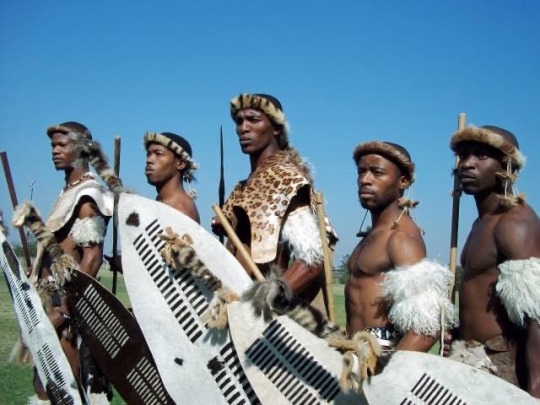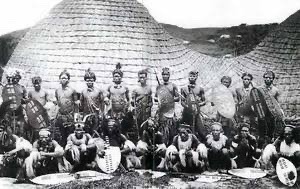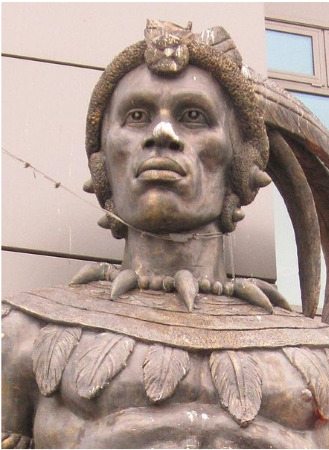#Congo Basin
Explore tagged Tumblr posts
Text
https://www.weforum.org/stories/2025/01/congo-kivu-kinshasa-green-corridor/
The Democratic Republic of Congo to create the Earth’s largest protected tropical forest reserve

The Congo Basin, the largest tropical forest carbon sink in the world, is threatened by war, poverty and the climate crisis.
A new model of green economic development, conservation and peacebuilding in eastern DRC is protecting the forest while sustainably harnessing natural resources to benefit local communities.
The DRC government and partners are announcing the Kivu-Kinshasa Green Corridor in Davos, which will scale up this model to cover an area the size of France.
#good news#environmentalism#science#dr congo#democratic republic of the congo#congo#congo basin#environment#nature#conservation
269 notes
·
View notes
Text
#Congo#people of congo#congo mines#congo rainforest#congo basin#free congo#congo genocide#congolese#democratic republic of the congo#dr congo#save congo#help congo#important#please boost#signal boost#news#american news
490 notes
·
View notes
Text










The Congo Basin is in located in what is known as Central Africa, in the region west equatorial Africa. Before colonialization and still till this day scarification was practiced. The Congo holds some of the worlds most complex scarification methods and designs. The Body modification process is usually just talked of as a way to show ones beauty and to eroticize. However it also had to with ones place in society, it dealt with memory. It showed social process how people navigation through their community, their affliction. The marks indicated social rank , social status, or martial status. Marks showed if a person with a womb have given child birth. The marks could also be an indicator of a membership in a male or female secret initiatory society. If a person refused to participate in this process of marking, their life would face difficulties and it would be hard for them to participate in social life.
Source for text : The Etribal
1 - Central Africa, Democratic Republic of the Congo, Lega peoples, ca. early to mid-20th century CE.
2 - Lega woman with facial scarification and elaborate hairstyle, Kabila village, Congo (Democratic Republic), by Eliot Elisofon August 18, 1959 to December 20, 1959.
3 - Old mask - Metal, Wood - Ngbandi, Ngbaka - Democratic Republic of Congo Early / Mid 20th Century
4 - Man of M’Bouaka in Province de l'Equateur. Parmi les M'Bouaka by Casimir Zagourski 1924-1941.
5 - Democratic Republic of the Congo; Luba artist, Attributed to the workshop of the Master of Mulongo, Headrest, Mid-late 19th century. Shot by Franko Khoury.
6 - Illustration of a Baluba negroes from Abiangi
7 - Luba figurine 1909; 1909.29.1
8 - Tabwa artist, Democratic Republic of the Congo, scarification. Photo court. Photographer unknown.
9 - Ubangi region, Congo, Ngbaka. Mask, 19th century. Wood,
10 - Belgian Congo man, 1900-1915. Photographer unknown
#Congo basin#central africa#Congo#Democratic Republic of the Congo#lega#scarification#Kabila#Eliot Elisofon August#Ngbandi#Ngbaka#M’Bouaka#Casimir Zagourski#Abiangi#Baluba#africa#mask#black hair#belovedbluv#mine
6 notes
·
View notes
Text
29.12.2023 | Petitions for the environment and climate change.
Please read, share wherever you can, talk about them and if you can afford it, please, please, please donate - consider taking up a collection among your friends.
Actions.eko.com: Nestlé and P&G: Stop setting Indonesia’s rainforests on fire
Indonesia’s forests are burning – a thick toxic haze suffocates half of the country, keeping children out of school and forcing people and animals to relocate. But it didn’t happen by accident and we know who the arsonists are. Together, we will hold them accountable. Nestlé and Procter & Gamble are doing business with rogue palm oil and paper producers who recklessly burn precious rainforests to the ground to expand their monocultures, steal Indigenous lands, and drive orangutans, rhinos, and elephants closer to the brink of extinction. (keep reading)
Rainforest Action Network - RAN: This one is for donating, they need 100,00$ by December 31!
We urgently need your help to fight for the world's last rainforests in 2024 by making any size donation today. Those who believe they can change the world are the ones that do. Donate now.
Help us challenge mega-corporations like Liberty Mutual, Bank of America, Procter & Gamble, Nestlé and Mondelēz. Their thirst for endless profits contributes to the widespread destruction of irreplaceable rainforests like the Leuser Ecosystem of North Sumatra and the Amazon rainforest and fuels the expansion of dangerous fossil fuel projects that choke the life out of the planet. For a small organization, RAN's significant impact is only possible because of dedicated supporters like YOU. Your generous donation today makes a world of difference.
Rainforest Rescue: DRC: Do not sacrifice Congo's rainforests to the oil industry!
The DRC government in Kinshasa is nearing a point of no return: President Tshisekedi wants to sacrifice vast areas of Congo rainforest and peatland for oil. This would be an unmitigated disaster for the climate, biodiversity and local people. Together with our African partner organizations, we can put a stop to these plans. The rainforests of the Congo Basin are home to millions of people and countless animal and plant species, including chimpanzees, bonobos and gorillas. They are a treasure trove of biodiversity and crucial to the fight against climate change. Despite this, the government of the Democratic Republic of Congo (DRC) began auctioning 27 oil and 3 gas blocks in late July. The blocks cover some of the last remaining intact forests on Earth. Three of the blocks overlap the Cuvette Centrale peatlands, which are estimated to store 30 billion tons of carbon, the equivalent to one years’ worth of global emissions. The peatlands are so vast and remote that little is known about the biodiversity at stake there. Nine oil blocks overlap protected areas. More than half of the Congo Basin's peatlands and 60 percent of its rainforest are in the DRC, the country plays a key role in the fight against the climate crisis. The science is clear: the governments of the world must cut carbon emissions in half within the next eight years. In his speech at the UN's COP26 conference in Glasgow, President Tshisekedi promoted the vital role of the Congo Basin forests in regulating the global climate and his intention to enhance DRC’s energy mix by "combining several types of energy: biomass, hydro, solar." The cost of not doing so, he said, would be a climate crisis. The world cannot afford any further expansion of oil and gas. According to the International Energy Agency (IEA), an immediate end to new investment in fossil fuel supply projects is the first step to keep global warming below 1.5°C and achieve global net zero emissions by 2050. In an alliance of environmentalists from Africa and around the world, we want to keep the oil in the ground and the fossil fuel industry out of the Congo Basin. Please sign our joint petition!
DR Congo: Stop the destruction by miners and loggers in Tshopo!
The Democratic Republic of the Congo is home to the second largest area of rainforest on Earth. Defending it is crucial to the fight against climate change and the extinction crisis. Yet miners are polluting rivers and loggers clearing forests in Tshopo province. In the small town of Basoko, local people are fighting back. The people of the small town of Basoko fear for their health and livelihoods: the Aruwimi River, a tributary of the Congo, has been polluted ever since the Chinese mining company Xiang Jiang Mining began dredging for gold there. Some species of fish have disappeared completely. Skin diseases are on the rise. "We say NO to mining in Aruwimi, which is destroying our ecosystem in an anarchic way," states a memorandum to the county government read during a demonstration. On March 11, 2022, residents of the region protested on land and with boats against the trashing of their environment. Mining is not the only threat to nature in Tshopo province: companies such as FODECO, Congo Futur and SOFORMA are reportedly logging at a breakneck pace near Basoko. "They are systematically plundering the forests without any benefit to local people," says Jean-François Mombia Atuku, chairman of the environmental protection organization RIAO-RDC. "Anyone who demands accountability is silenced," he said, adding that workers are "kept like slaves" in the forest. "Human rights are not relevant for these companies." The grievances regarding mining have been heard in the capital Kinshasa: In January 2022, Environment Minister Eve Bazaiba called on Xiang Jiang Mining to cease operations by February 25, 2022. However, nothing has changed since then – the company is still operating, apparently unimpressed. "What we need now is international pressure," says Jean-François Mombia Atuku. It must be brought to bear on President Tshisekedi, who positioned his country as a heavyweight in the fight against the climate crisis during the COP26 climate conference. It’s time to apply that international pressure – please sign our petition.
#long post#signal boost#environment#climate change#rainforests#Indonesia#Congo#Democratic Republic of Congo#donations#petitions#climate crisis#mining#Congo Basin#COP26#Glasgow COP26#defending the Earth#defending the planet#animal extinction#animal conservation#forest conservation#nature conservation#my posts
9 notes
·
View notes
Text
0 notes
Text
Top 10 Dense Forests of the World
Earth’s dense forests are enchanting, mysterious, and crucial to the survival of our planet. These lush green sanctuaries cover vast expanses, harboring an incredible variety of flora and fauna, purifying the air, and regulating our climate. This article takes you on a journey to explore some of the world’s most breathtaking and ecologically vital dense forests.
1. Amazon Rainforest – South America
The Amazon Rainforest, often referred to as the “Lungs of the Earth,” is the largest tropical rainforest in the world. Stretching across nine South American countries, it spans approximately 6.7 million square kilometers. Home to a mind-boggling diversity of life, the Amazon is teeming with jaguars, macaws, and countless plant species yet to be discovered. Unfortunately, it faces threats like deforestation and habitat loss, making conservation efforts critical.
2. Congo Basin – Africa
The Congo Basin, located in Central Africa, is the world’s second-largest tropical rainforest, after the Amazon. This pristine wilderness sprawls across several countries and is home to endangered species like forest elephants, lowland gorillas, and bonobos. The basin plays a vital role in carbon storage and climate regulation, making it a global treasure that requires protection from deforestation and logging.
3. Borneo Rainforest – Southeast Asia
Borneo, the third-largest island in the world, is renowned for its lush rainforests. These forests shelter iconic species like the orangutan and pygmy elephant. However, they are increasingly threatened by deforestation for palm oil and timber. Conservation initiatives aim to protect this biological hotspot.
4. Daintree Rainforest – Australia
The Daintree Rainforest in Queensland, Australia, is a primeval world of ferns, ancient trees, and unique wildlife. It’s a UNESCO World Heritage site and harbors species found nowhere else on Earth, like the cassowary and Boyd’s forest dragon. Conservation efforts have been successful in safeguarding this remarkable ecosystem.
5. Tongass National Forest – United States
In North America, the Tongass National Forest in Alaska stands as the largest temperate rainforest in the world. Its misty, evergreen expanse is home to wolves, bears, and bald eagles. Although facing pressure from logging and resource extraction, it continues to be a focus for environmental preservation.
6. The Black Forest – Germany
The Black Forest, or Schwarzwald, in Germany, is a storied woodland famous for its dense, dark canopies, which inspired countless myths and fairy tales. This forest offers a unique blend of culture and nature. Tourists visit not only for the stunning landscapes but also for the charming villages that dot its expanse.
7. Val Grande National Park – Italy
Val Grande National Park is Italy’s wildest and least accessible protected area. Located in the Italian Alps, it is characterized by steep terrain, rugged cliffs, and dense woodlands. This park is ideal for adventurers seeking solitude, challenging hikes, and stunning alpine scenery.
8. Taman Negara – Malaysia
Taman Negara, Malaysia’s premier national park, is one of the world’s oldest rainforests. It boasts unique flora and fauna and offers an array of adventures like jungle trekking, canopy walks, and river cruises. The park is home to elusive wildlife such as tigers, leopards, and Asian elephants.
9. Tumuc-Humac Mountains – French Guiana
Tumuc-Humac Mountains in French Guiana are part of the Guiana Shield, one of the world’s last untouched wildernesses. This region is teeming with pristine rainforests and unique ecosystems. It offers a glimpse into the untouched wilderness of South America.
10. Tesso Nilo National Park – Indonesia
Tesso Nilo National Park in Sumatra, Indonesia, is a critical refuge for the critically endangered Sumatran elephant and tiger. Illegal logging and habitat destruction pose significant challenges to this park, making conservation efforts crucial for preserving its remarkable biodiversity.
Exploring these dense forests, whether in person or through the lens of documentaries and photographs, is an opportunity to connect with the wonders of our natural world. They remind us of the beauty, diversity, and fragility of the ecosystems that enrich our lives and inspire us to become better stewards of our planet.
1 note
·
View note
Text

Basins of Léopoldville, modern-day Kinshasa, Democratic Republic of the Congo
Belgian vintage postcard, mailed in 1910
#congo#ephemera#mailed#1910#photography#modern#vintage#briefkaart#republic#kinshasa#carte postale#lopoldville#postcard#photo#sepia#ansichtskarte#modern-day#postkarte#democratic republic of the#postkaart#belgian#léopoldville#basins#democratic#postal#tarjeta#historic
5 notes
·
View notes
Text
The Congo
#the congo#Congo#africa#world travel facts#Congo river#Congo basin rainforests#Pygmy tribe#bonobo#nouabale-ndoki national park#odzala national park#brazzaville#diosso gorge#travel#travelfacts#tourism#worldfacts#naturaltourism#geotourism
4 notes
·
View notes
Text

African Knifefish - is a member of the Featherback and Knifefishes family. It is widely distributed in tropical Africa, in the Nile, Chad, Niger, Ogowe and Congo basins. Also present in coastal rivers in Sierra Leone, Liberia, Togo, Benin and Cameroon. It prefers quiet waters with vegetation. It can produce barking sounds and it comes to the surface from time to time to swallow air. Feeds at dusk and during the night on worms, crustaceans, insects and snails. It can reach a maximum length of 30 cm (about 12 inches). https://www.redbubble.com/shop/ap/152957627
1 note
·
View note
Note
Do you have any bichir to share? My polycule has one and he's still growing. It's very fun to watch!
OK, so this is one of my absolute favorite groups of fishes! I love these little dragons...

Barred Bichir (Polypterus delhezi), family Polypteridae, family Playpteriformes, found in the Congo River System of West Africa
photograph by Hampus Hertzman

Ornate Bichir (Polypterus ornatipinnis), family Polypteridae, family Playpteriformes, found in Lake Tanganyika and the Congo River basin in Central and East Africa
photograph by The Wet Spot


Saddled Bichir (Polypterus endlicherii), family Polypteridae, family Playpteriformes, found in lakes and rivers systems across central Africa
photograph by GoodJoseph & GibbyThick
1K notes
·
View notes
Text
#Congo#people of congo#congo mines#congo rainforest#congo basin#free congo#congolese#democratic republic of the congo#help congo#congo genocide#dr congo#save congo#important#please boost#signal boost#news#american news
16 notes
·
View notes
Text




Scarification Blades of Congo
1 - Tim Hamill
2 Ornate Scarification Knife
Wangata, D.R. Congo
Iron
19th century
De Waele & Lefebvre, Couteaux de Scarifications Du Congo, 2007
3-4 - Pair of Scarification Blades
Kuba / Dengese / Lele / Shoowa / Bushoong / Ngongo / Ngeende, D.R. Congo
Forged iron, copper
Late 19th century
De Waele & Lefebvre, Couteaux de Scarifications Du Congo, 2007
0 notes
Text
On the east coast of Australia, in tropical North Queensland, lies the Daintree rainforest—a place where the density of trees forms an almost impenetrable mass of green. Stepping into the forest can feel like stepping back in time. It contains many ancient plant families dating back to the ancient supercontinent of Gondwana. The air is warm and thick with humidity, carrying the earthy scent of wet leaves and soil. Sunlight filters through the dense canopy in scattered beams, while ferns and seedlings carpet the forest floor. The Daintree and other tropical rainforests, including those in the Amazon, the Congo Basin and Southeast Asia, have been called the "lungs" of our Earth. They absorb carbon dioxide from the air while releasing water vapor and oxygen via photosynthesis—the process by which plants take in carbon dioxide and fix energy.
Continue Reading.
91 notes
·
View notes
Photo

Africa after the Berlin conference
🇵🇱 "Wielki atlas historyczny", Demart, 2023
via cartesdhistoire
From 1880 onwards, a number of European nations set out to conquer Africa, not for economic reasons (by definition, they were unaware of the continent's resources) but for political and strategic reasons: France sought to make up for its losses in Europe; Great Britain wanted to compensate for its isolation in Europe by enlarging and exalting its empire; Germany and Italy wanted to enhance their prestige through imperial exploits. This new imperialism is thus a nationalistic phenomenon.
The objectives of the West African Conference, or Congo Conference, held in Berlin from Nov. 15, 1884 to Feb. 26, 1885, were to “regulate the freedom of trade in the Congo and Niger basins” and to “prevent misunderstandings and disputes which might arise in the future from the taking of new possessions on the coasts of Africa”. The General Act adopted at the time made no mention of partition The two most important colonial empires were the British and the French. The British system of colonization was profoundly different from the French system (which made colonization the vehicle for the ideals of 1789): for the English, utilitarianism remained the principle of the colonial enterprise. This rule was fueled by a quiet pride that rested on the consciousness of indisputable superiority, and maintained the distance between the master builder and the executors, leading to a solid indifference to local customs, a singular ease at contenting themselves with indirect administration and a disdain for human rapprochement and moral outreach. But extreme vigilance, tenacious energy and continuity of action made it possible to correct excesses or errors. Expansion took place from the coast, and then, after zones of influence had been negotiated on paper by diplomats, borders were gradually demarcated on the ground, sometimes taking into account pre-colonial local realities. The transformation of these limits into frontiers was a long process, requiring multiple adjustments, and was, eventually, only effective at the time of independence.
72 notes
·
View notes
Text





Black history is not all about slave trade
Slave trade is not just black history it’s just 10% of the history africa holds
This is a message to my black brothers and sisters in America
Today I will be talking about the Zulu tribe
The ancestors of the Zulu migrated from west Africa into southeastern Africa during the Bantu migrations from 2000 BC until the 15th century. The Zulu tribe expanded into a powerful kingdom, subdued surrounding groups, and settled in the region known as KwaZulu-Natal in present day South Africa. After enduring colonialism and overcoming apartheid, they have emerged as the dominant ethnic group in South Africa todayAccording to Zulu ancestral belief, the first Zulu patriarch was the son of a Nguni chief who lived in the Congo Basin of Central Africa. By the early 1800s, the Zulu had migrated to Natal, where they lived among other Nguni-speaking chiefdoms. There were ongoing power struggles among these chiefdoms.Around 1808, Chief Dingiswayo of the Nguni-speaking Mthethwa people led wars of conquest to end the power struggles among the chiefs in the communities surrounding his chiefdom.Chief Dingiswayo centralized power by organizing the military into age-based groups, rather than lineage-based regimens. This weakened kinship ties of the conquered communities. Chief Dingiswayo left the conquered chiefdoms relatively intact after they accepted his dominion.The Zulu developed into a distinct cultural group by the time they were conquered by Chief Dingiswayo and his Mthethwa people in the early 1800s. At that time, the Zulu were a small lineage numbering around 2,000 people led by Chief Senzangakhona.Shaka, the future founder of the Zulu Kingdom, was the illegitimate son of the Chief Senzangakhona. Shaka was drafted into the Mthethwa and became one of Chief Dingiswayo's bravest warriors. When Chief Senzangakhona died, Shaka seized the Zulu throne.Using Dingiswayo's military style of weakening kinship ties amongst warriors, Shaka controlled the Zulu community. After Dingiswayo's death, he killed the legitimate heir and installed a puppet as Chief of the Mthethwa.Before long, Shaka seized control over Mthethwa's regiments and assumed power of the newly formed Zulu Kingdom in 1818.

Shaka, Zulu King 1818 to 1828.
Zulu tribe facts include the following:
Shaka Day is celebrated in September by slaughtering cattle, wearing traditional clothing, and wielding traditional weapons. Dignitaries from other tribes and nations attend.
Traditionally a senior male is the head of the clan. Young men train from childhood to fight and defend the clan. Members of the clan have kinship ties based on blood or marriage.
To show respect, the Zulu do not refer to elders by their first name; they use "Baba" meaning father, and "Mama" meaning mother.
Patrilineal inheritance and polygamy are practiced in Zulu culture; having more than one wife is acceptable if one can afford it.
In Zulu culture, bride wealth must traditionally be paid in cattle. Most native groups in South Africa, including Nguni-speaking Xhosa, Ndebele, and Swazi pay bride wealth.
#life#animals#culture#black history#history#blm blacklivesmatter#heritage#africa#biden is obama's puppet#england
639 notes
·
View notes